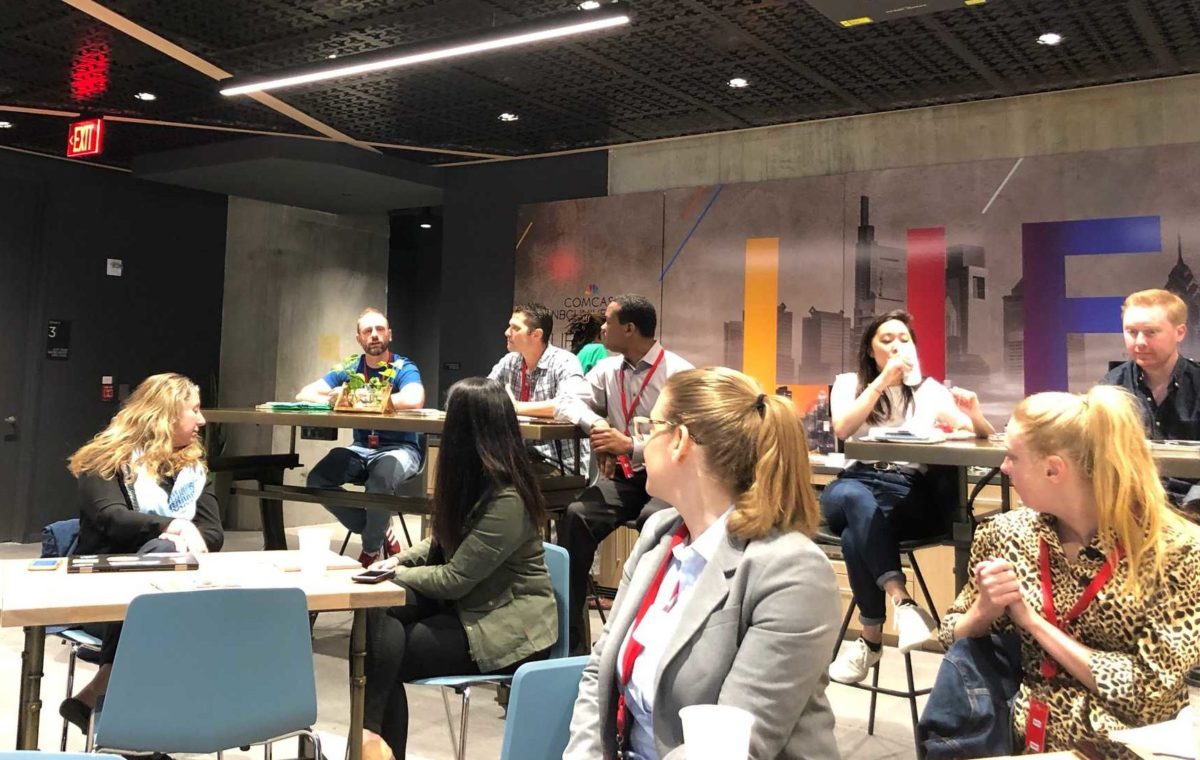Employee turnover can be expensive, time-consuming and dampen overall morale. But when the economy is doing well, and in a highly competitive industry like tech, the problem can be exacerbated.
At Technical.ly’s stakeholder meeting during Philly Tech Week 2019 presented by Comcast, we posed the question: How are you ensuring your staffers have a clear career path inside your company? Here’s how different types of organizations are answering it, according to their managers.
###
The ever-evolving nonprofit: Be upfront when flexibility is needed
Coded by Kids founder and CEO Sylvester Mobley knows that at a super small org such as his, planning for the long term for each individual can be next to impossible. Everyone must wear many hats.
“It’s hard for me to say to an employee, ‘This is what your career trajectory is,'” he said. What he’s learned is that he can say, ‘Because of the fact that things are constantly changing, there is a role — if you’re able to evolve and change as the organization is changing. That is the only thing I can guarantee. What your role is, what you’re doing, there are no guarantees about that.”
The fast-growing startup: Institute a more formal review process
A year ago, life sciences company Group K Diagnostics only had four employees. As of early May 2019, there were 22, said founder and CEO Brianna Wronko.
“We realized that we couldn’t keep micromanaging people’s careers and sitting down with them on a monthly basis saying, ‘What project do you want to talk on this month?'” she said.
Instead, the leadership team instituted annual reviews where the employee has the opportunity to share how they’d like to grow, allowing for the development of a six-month or year-long plan to train them on a new skill. For example, an office manager began learning new financial management skills from the COO.
“It’s a two-way conversation,” Wronko said. “At some point, your organization will need that employee to grow to stay in that role that’s ever-evolving as a startup, but also, the employee has a chance” to grow in an area they’re passionate in, too.
The institution: Loosen that review process — and put them on bigger projects
Penn Center for Innovation Chief Marketing, Communications and Program Officer Laurie Actman said that her department has been experimenting with more frequent and aspirational performance reviews following trends in the business world.
“We had a pretty traditional annual review, and they changed it to much less traditional quarterly check-ins, where the employee is prompted to answer questions much more about, ‘What would you like to learn? Do you feel supported in your role? What are your goals for the future?’ Actman said.
Managers might still ask employees what they think they’ve done well and how they think they can improve, but a benefit of the new system is immediate feedback so both parties can adjust quickly as needed — not six months from when the problem starts.
Another way Actman tries to develop her employees’ skills, and stake in the organization: “Get them engaged in more high-profile strategic projects that are important to the leadership of the organization, or even above that, so they get to feel noticed — because when you’re in a big organization, your little piece doesn’t always see the light of day from the people at the top,” she said. “Big-lift projects that aren’t part of their day-to-day” can help them get access to those higher-ups.
Actman said it’s also helpful when employees can point to someone a few years ahead of them in their career and say: That person is who I want to be in five years. “That helps me a lot to understand what their goals are,” she said.
The established tech company: Show them the greener grass
Since HR head Vinny Palochko started at cloud-hosting services company Linode seven years ago, it’s grown from about 30 people to 200.
And where there was once an unhealthy mentality of departments “poaching” each other’s best employees, there’s now an established “day in the life” program that “allows any employee to partner up with any other employee in a different department” for a full-day preview of what their job is, the tools they use and what they’d be involved with if they also joined that new team, Palochko said. That can be especially helpful for, say, support staffers who are thinking of giving dev work a try.
Every employee also gets an hour of free time per week to “do whatever they want to do, whether it’s learning a new skill, or contributing to something that’s going to better their ability to do their job or learning about a different job at Linode and just enhance their skillset,” Palochko said, as long as it’s productive. “It’s been a tremendous success.”
The launchpad: Give them a roadmap
Urban Technology Project (UTP), which trains recent high school graduates as computer support specialists for the public school system, is a “temporary solution,” said Apprenticeship Director Beth St. Clair — and it’s meant to be. During participants’ three-year apprenticeships, they get a career coach who help them transition to a full-time career and “are well versed in the obstacles that our young people face.”
Next year, UTP will be implementing an “exit plan” for each student: Instead of asking them what they want to get out of the program during the three years, coaches will ask where they want to end up and then walk backward from, say, 2022 to the current year, mapping out steps to achieve the end goal.
Because young people aren’t as likely to stay in their first jobs longer than a few years, “it’s almost taking the millennial approach,” St. Clair said.







